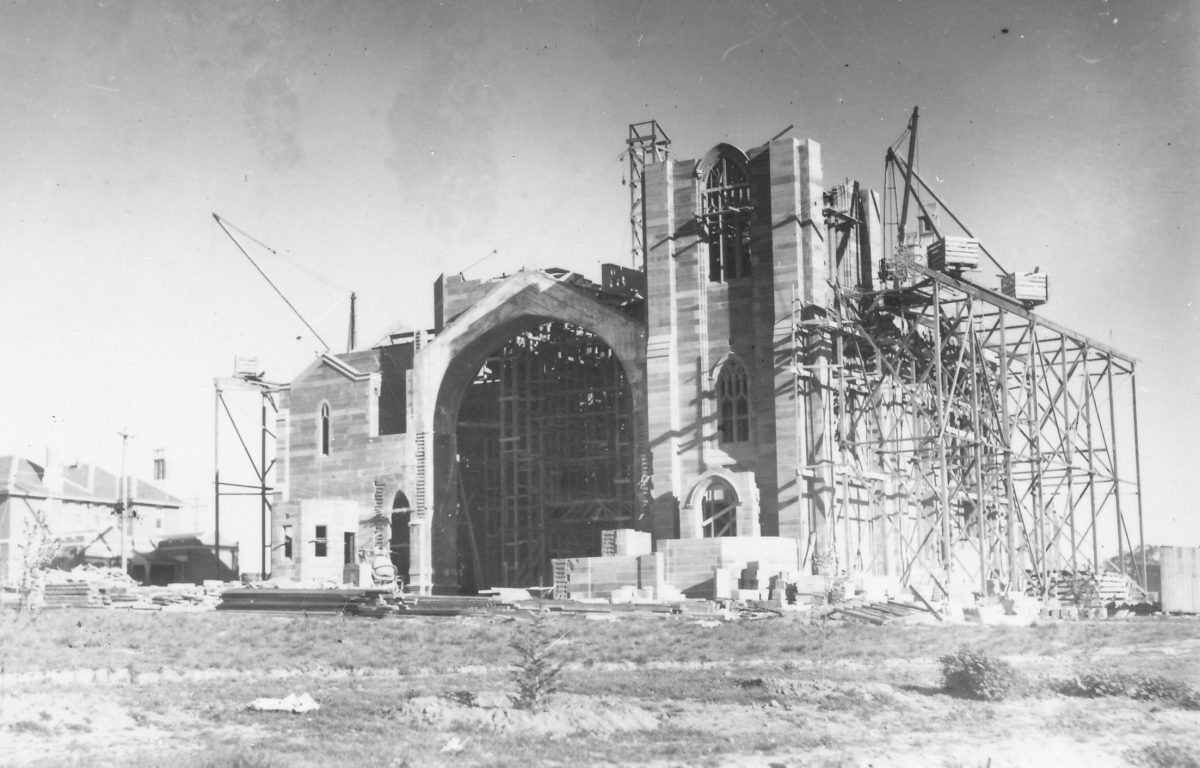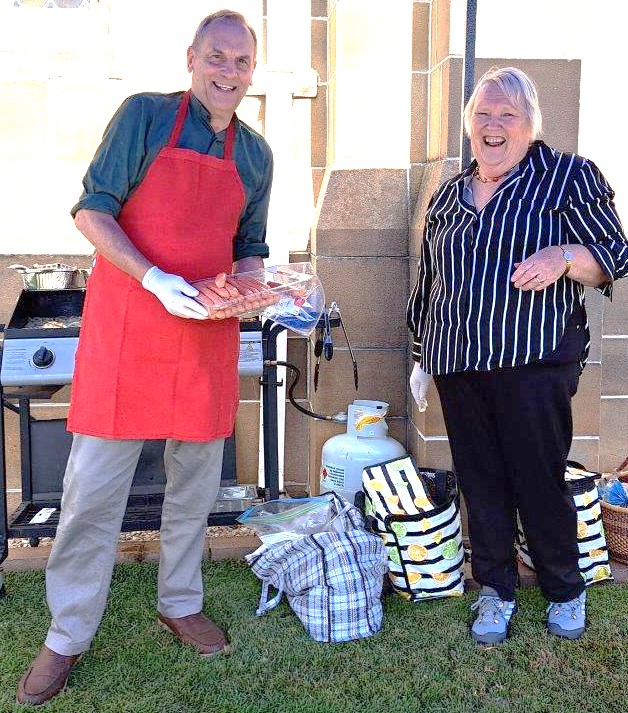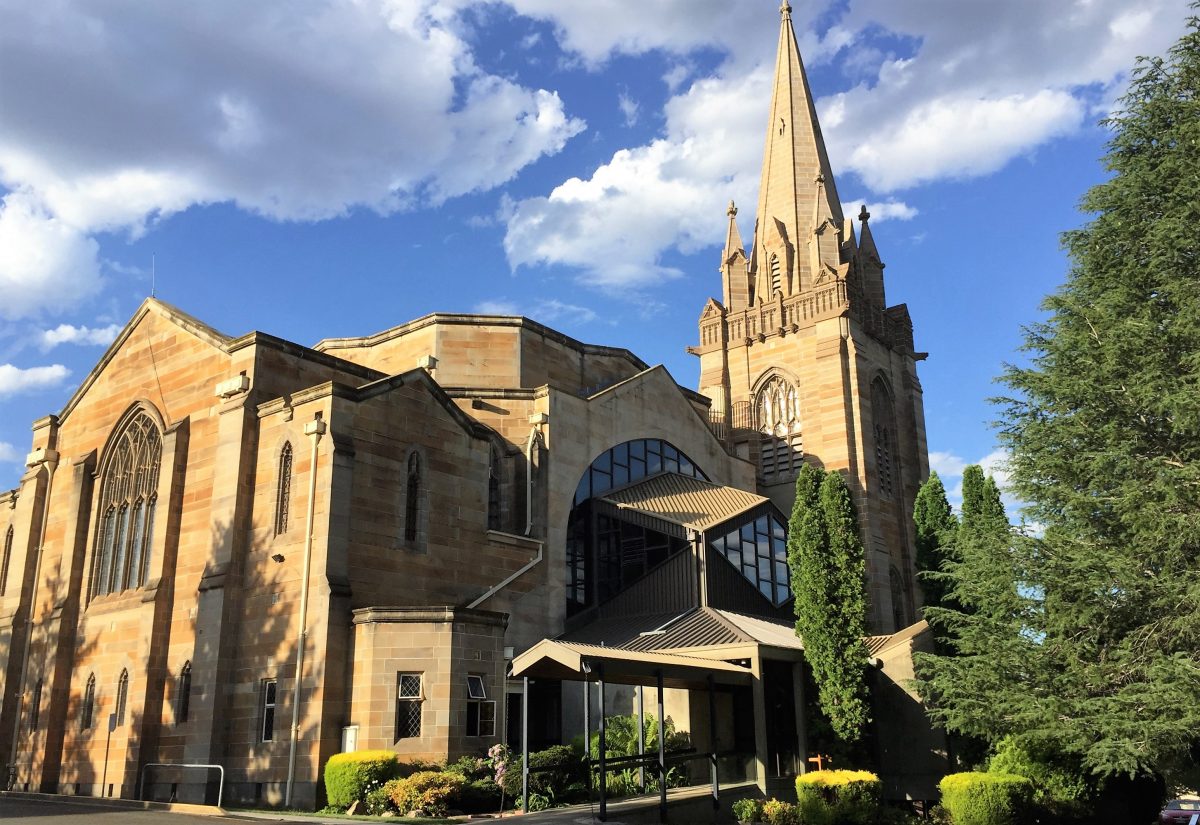
Work on St Andrew’s Presbyterian Church was well underway by 1932. This year marks its 90th birthday and there’s every reason to celebrate. Photo: Supplied.
It started as little more than a slab hut in 1934, a church for the people built by the people in Lyneham.
Today, the heritage-listed St Andrew’s Presbyterian Church at Forrest is one of the oldest in the ACT and, next month, will mark its 90th year.
For St Andrew’s Church Minister Reverend David Campbell and Session Clerk Sue Hogan, it’s all about spreading the word about this church milestone, its history and the perfect opportunity to welcome everyone who had a connection to its “Back to St Andrew’s” weekend from 20-22 September.
“It is such a special occasion,” Mrs Hogan said. “We would love to see as many people as possible with a connection to St Andrew’s, back in Canberra for that weekend.”
The church clerk for almost a decade and a member of the congregation since moving to Canberra in 1983, Mrs Hogan said St Andrew’s was an important part of the national capital’s history, with both the city and the Presbyterian Church growing up together.
First built in Lyneham where St Ninian’s Church stands today, it was a Presbyterian church until 1977 when the church union occurred, before moving to its present site at Forrest.
“The development of the church of St Andrew is synonymous with the development of the national capital,” Mrs Hogan said.
“In 1924 a site was adopted on State Circle as a cathedral-size site. In the same year Federal Cabinet met for the first time in Canberra at the Yarralumla Homestead.”
Fifteen months after the opening of the Provisional Parliament House in May 1927, and following the opening of the manse in 1928, building of the national Presbyterian Church of St Andrew began.
Mrs Hogan said St Andrew’s was officially opened on 22 September 1934, thanks to the funds raised by donations from Presbyterians throughout Australia.
“For many years it dominated the eastern slope of Capital Hill and was often called ‘The light on the hill’.
Originally planned to be a cathedral, only half of the planned church could be completed because of the war years and Great Depression. Later, members of the church raised funds to complete a smaller entrance in 1978 which included a new nave.
One of the most striking religious buildings in the capital, the church is built of sandstone with Queensland maple inside, slate from Wales on the roof and unique stained glass windows in the apse designed by John Radecki of John Ashwin and Co.

St Andrew’s Church Minister, Reverend David Campbell and Session Clerk Sue Hogan at work on a fundraising barbecue for the church. Photo: Supplied.
The church also features an organ comprising 1140 pipes built by Hill, Norman and Beard and a manual bell tower which commemorates motherhood.
Mrs Hogan said there had always been a strong link between the church and wars.
“Dr John Walker was charged with building the church,” she said, “and he had three sons who were all killed in World War I. But he had the foresight at the time to build a chapel on the north-east side of the church, separated by a wooden curtain with archways.
“That chapel has served as our outdoor pulpit since then. Before the Australian War Memorial was built, we’d always hold the Dawn Service here at St Andrew’s.”
The connection also stretched to Chaplain Rowan Macneil, who was a prisoner-of-war in Changi during World War II. One day he saw some PoWs using a spent ammunition shell, made from brass, as an ashtray. Not happy, so the story goes, he suggested it would be better served as a communion chalice. It was later donated to St Andrew’s where it is still in use today.

How St Andrew’s Church, Forrest, looks today, on the eve of its 90th birthday. Photo: Supplied.
As one of the oldest buildings in Canberra, heritage-listed St Andrew’s holds an important place in the history and growth of Canberra.
Mrs Hogan said many prominent Australians worshipped regularly at St Andrew’s whilst it had also been the site for state funerals and for services to mark the opening of Parliament.
She said the only sadness over the celebrations was that St Andrew’s oldest parishioner, Beryl Hunter, who was 105, passed away last month.
More information about the Back to St Andrew’s celebrations for its 90th birthday are available online.












